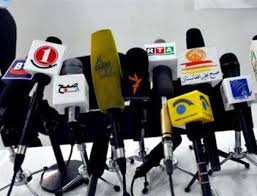KABUL (Pajhwok): A study has found that after ten months of Taliban rule, the Afghan media landscape has drastically changed, while acting government officials often reaffirmed their commitment to free media committed to national and Islamic values.
The research by Oslo metropolitan university published on June 9 said that threats, financial constraints, new harsh rules of conduct, as well as an institutionalized pre-censorship have contributed to a dwindling number of outlets and constrained the content of reporting.
Acting Afghan government spokespersons often reaffirmed their commitment to free and independent media activities in line with national and Islamic values.
The report quoted one informant as saying, “If the situation continues [as now], by next year [2023] there will remain no independent news media in Afghanistan.”
After a 20-year period of media diversity, more than half the media outlets have now closed down, the study said, adding the staff of the remaining ones is drastically reduced.
Thousands of journalists have left the country, while others are unemployed or hiding, in fear for their lives.
Those remaining in the profession often work with reduced or no pay and less than 20 percent of the female journalists are active in the country.
A culture of interference and pre-censorship is dominant, the study found. “This seriously hampers autonomous journalism.”
The report said the Ministry for the Promotion of Virtue and Prevention of Vice has replaced the Ministry of Information and Culture as the main political body dealing with the media.
Taliban intelligence officers from the GDI (General Directorate of Intelligence) frequently enter newsrooms to check on and threaten journalists and editors who do not abide by their rules, the study claimed.
Individual journalists have been frequently threatened, arrested, kept in detention and beaten, contributing to a culture of fear and the strangling of media outlets.
Lack of access to information is now a major obstacle to reporting, as all stories need to be “verified” by the Taliban before they are published. When they cannot access authorities, journalists have to leave many stories unpublished.
To report on human rights issues, women (and other) protests, minority oppression, the military resistance as well as the activities of Daesh (ISKP) is to court great risk and subsequently these issues have in part become “no-go-areas” for journalists.
Journalistic genres such as opinion, satire and cultural reporting, have almost or totally disappeared. For some of the remaining media, «protocol journalism» has become a safe way of staying alive, while others still try to publish critical news, i.e., news that implicitly or explicitly remain critical of the current power holders. A means of survival is a “hybrid media model”, with staff inside and outside Afghanistan, with some of the most sensitive stories being published from exile.
ma








GET IN TOUCH
NEWSLETTER
SUGGEST A STORY
PAJHWOK MOBILE APP